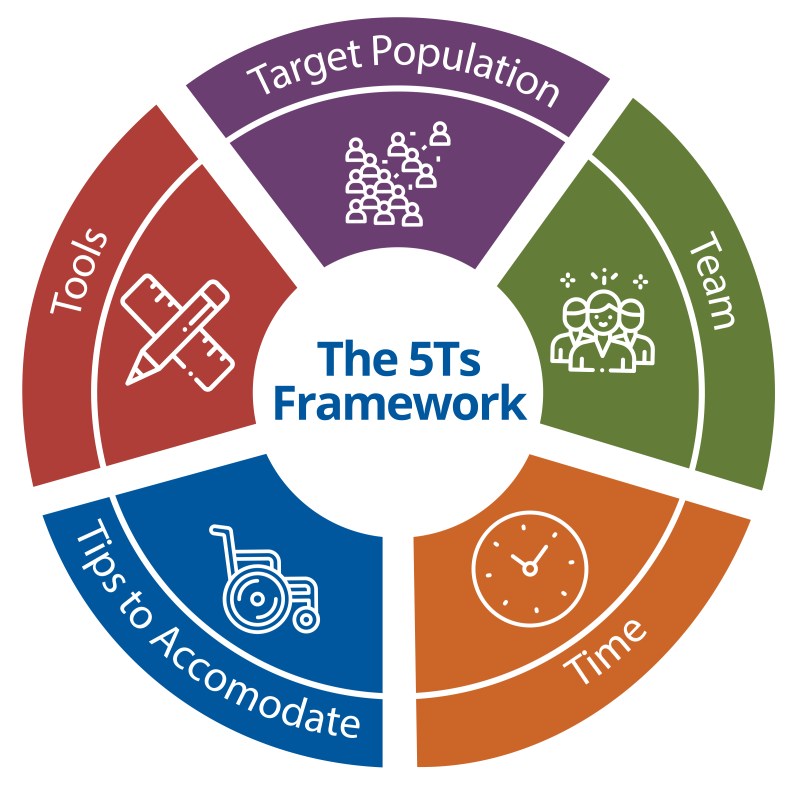
The 5Ts Framework team recently published a research letter in the Journal of the American Geriatrics Society (JAGS). The letter summarizes key findings from 8 community engagement studios (CES), convened across two institutions with diverse and intersectional groups of people. The purpose of this work was to expand the range of input on barriers and strategies for inclusion of older adults in research, and continue to further the development of the 5Ts Framework, and subsequent recommendations.
Results of a qualitative rapid analysis confirmed the relevance of each ‘T’ in the framework, and illuminated some broader themes that spanned across the T’s. Of note, two distinct groups emerged within the results – Research Personnel and Research Participants. Among research personnel themes that arose include:
- a lack of support and training as it relates to inclusion of older adults in research
- the occurrence of study-specific challenges that come up during the life of a study
- the presence of institutional or cultural barriers to participation
Among research participants themes that arose include:
- the importance of motivation when considering participation in research
- the consideration of study burden
- the significance of fostering trust with the research team
As we know, research participants are often not reflective of the population experiencing the greatest burden of disease. Research teams can play an essential role in engaging and retaining participants, but need the tools and time to do so. The broad themes that came out of the studios can be helpful to keep in mind when considering study inclusivity, and can help to focus efforts, particularly when resources are limited. The 5Ts Framework can provide the structure for study teams to better understand the challenges faced by both research personnel and research participants, and thus work towards overcoming them to ensure the study population is reflective of those impacted most.
Read the full research letter here: http://doi.org/10.1111/jgs.18359
